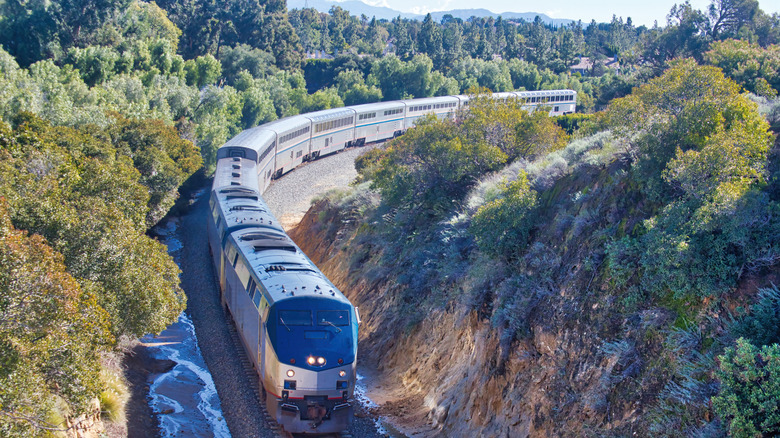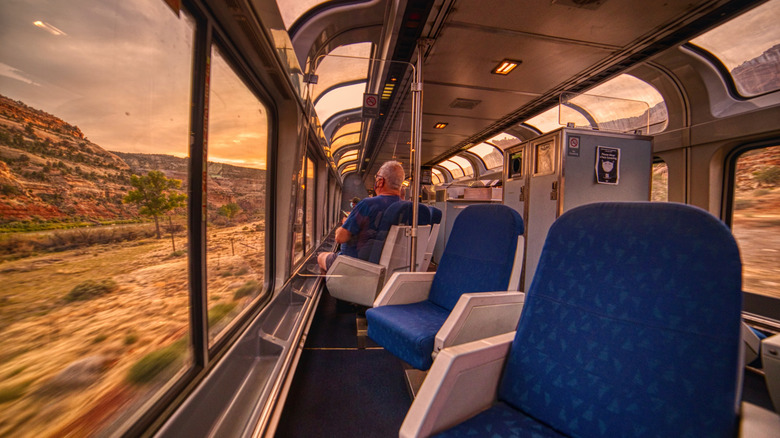Amtrak's Long-Lost Western Routes Could Finally Be Restored
There's no exact number, but we're pretty sure tens of millions of Americans have never set foot on a train. Sure, there's the monorail at Disney World or the Automated People Mover (APM) at the airport. Some cities have basic light rail networks, like Phoenix or Detroit, which are handy for commuters and a fun novelty for residents who would normally drive. But when it comes to cross-country travel, Americans are far more likely to take a plane or a car. Choosing an Amtrak trip would be eccentric, and most U.S. residents would never think to.
But it's not because of Americans lacking interest. A survey from the U.S. High Speed Rail Coalition claims that 60% of registered U.S. voters hold a favorable opinion about the potential of a nationwide high-speed rail, while only 16% are truly opposed. Those numbers vary by community and demographic, but there are reasons passenger rail appeals to more people than model-train enthusiasts: air travel is plagued by cancellations and delays, and there are credible reasons for budget airlines being endangered. Road trips can be fun but also rife with dangerous mistakes. In contrast, many train systems around the world have proven that rail travel can be efficient, solvent, and safe.
So it is perhaps exciting to hear that the Federal Railroad Administration (FRA) released a report in January 2025 about potentially reopening abandoned passenger lines in the western U.S. This was not an approved plan; rather, the study explored long-distance service across the country, including routes that were discontinued and could be revived. The report cited 15 potential links, including a line from Los Angeles to Denver and groundbreaking new service in Wyoming, Utah, and Nevada.
Could trains connect the West?
The study waxes poetic on the economic advantages — and community-building — of an enhanced Amtrak network. But it also notes that railroads were once common in areas that have long gone without, especially in small towns. "Regions with significant rural populations previously served by discontinued long-distance routes that no longer have passenger rail service include the Ohio River Valley, areas in the Southeast, and western Oklahoma," asserts one section.
Indeed, the report dedicates an entire chart to routes that used to exist: The "Floridian" connected Chicago to Miami and St. Petersburg, Florida. Passengers used to ride the "National Limited" from Kansas City, Missouri, to NYC and Washington, D.C. The "North Coast Hiawatha" could take you from Seattle to Chicago. Before the interstate highway system transformed travel — making the U.S. difficult to walk around, much less ride across by train — passenger rail already linked metro areas across the country. In theory, reviving that infrastructure could create jobs and cut down on car traffic and airport delays.
For now, the recommendations in this report are purely speculative; how many people will actually want to ride a train to Boise or Salt Lake City will require a lot more research, never mind whether such routes will be financially sustainable. Railroad enthusiasts don't need any convincing; we'd book our tickets tomorrow. Congress, on the other hand, may still require some convincing.

